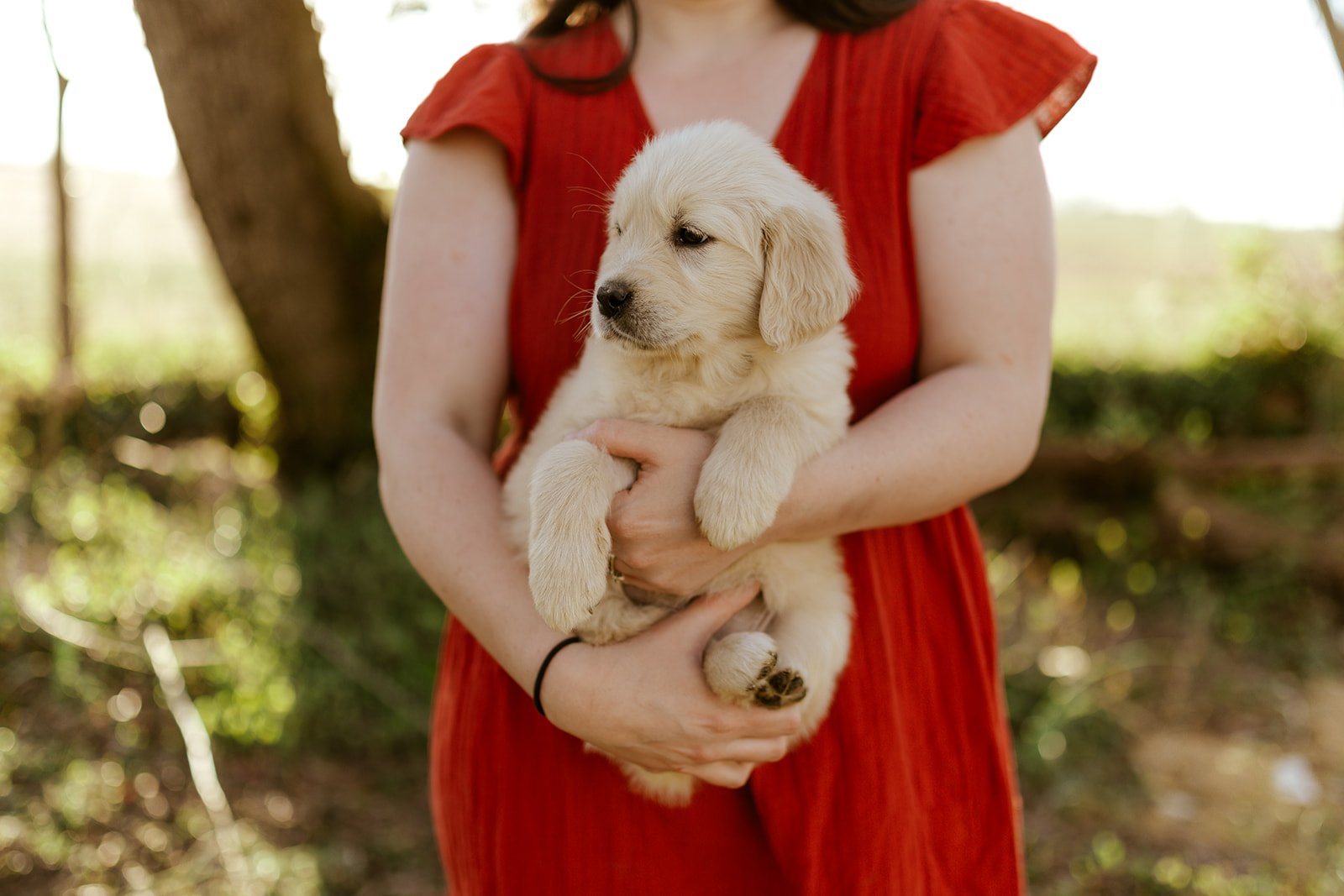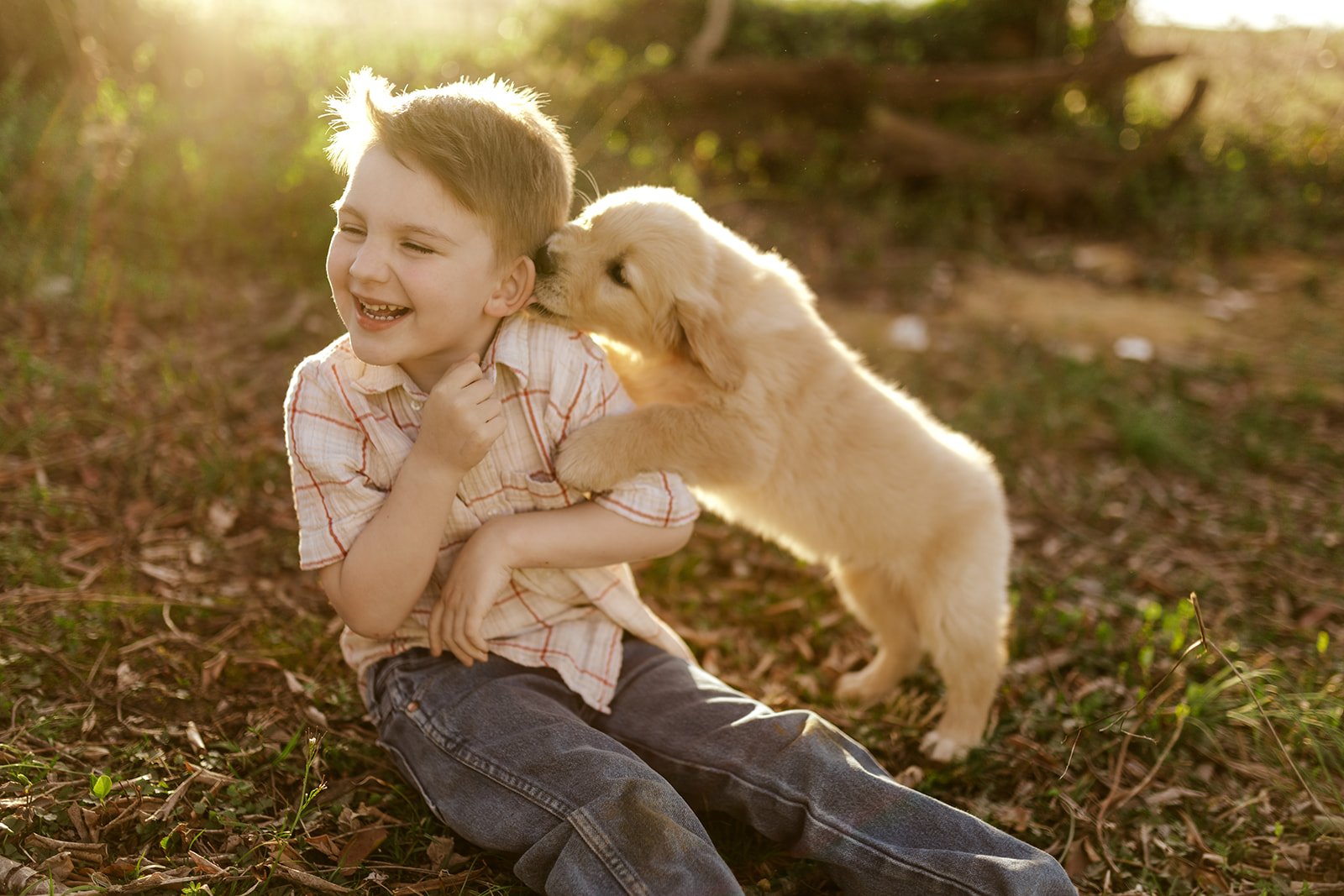Crate Training: Why It’s Not Cruel, It’s Kind
There’s something so special about bringing home a Golden Retriever puppy. The soft fur, the tiny paws, the way they look up at you with complete trust—it’s a season of life that’s as sweet as it is fleeting. But as wonderful as those early days are, they also come with a learning curve. One of the most beneficial tools for both you and your puppy during this time is crate training. Unfortunately, there’s a common misconception that using a crate is cruel. In reality, when done properly, crate training is one of the kindest things you can do for your puppy—and for your family.
A Safe and Cozy Den
Dogs are naturally den animals. In the wild, they seek out small, enclosed spaces where they feel safe and secure. A crate mimics this instinct by providing your puppy with a space that is entirely their own—a cozy retreat where they can rest, relax, and recharge. When introduced correctly, a crate becomes a place of comfort, not confinement.
If you’ve ever noticed your puppy curling up under the dining table or tucking themselves into a corner, that’s their natural denning instinct at work. By providing a crate, you’re giving them a designated spot that fulfills this need while also keeping them out of trouble when you’re unable to supervise.
Crate Training Supports Housebreaking
One of the first major hurdles of puppyhood is house training, and a crate is an invaluable tool for this process. Puppies instinctively avoid soiling the area where they sleep, so by using a properly sized crate, you’re encouraging your puppy to hold their bladder until you take them outside.
A consistent routine of taking your puppy out first thing in the morning, after meals, and before bed—combined with crate time in between—teaches them where they should and shouldn’t go. This method speeds up housebreaking significantly and reduces accidents in the home, making the transition from puppyhood to well-trained companion much smoother.
Preventing Destructive Behavior
Puppies explore the world with their mouths, and that often means chewing on things they shouldn’t—shoes, furniture, kids’ toys, or anything else left within reach. When a puppy is left unsupervised, even for a few minutes, they can quickly get themselves into mischief. A crate provides a safe space where your puppy can rest when you can’t keep a close eye on them.
Instead of coming home to shredded throw pillows or chewed-up baseboards, you can confidently leave your puppy in their crate with a durable chew toy, knowing they’re safe and secure. This not only saves your home from destruction but also prevents your puppy from ingesting something harmful.
Helping Your Puppy Learn to Self-Soothe
Separation anxiety is a real struggle for many dogs, and it often starts in puppyhood. Crate training teaches puppies how to be alone without distress. When introduced gently and positively, a crate becomes a place where a puppy learns to settle down, entertain themselves with a toy, and relax without constant human interaction.
This skill is essential for a well-balanced dog. Puppies that never learn to be alone often develop anxious behaviors, such as excessive barking, whining, or destructive tendencies when left unattended. A crate provides structure, helping your puppy develop the confidence to rest peacefully, even when you’re not right next to them.
Making Travel and Vet Visits Easier
Whether you’re heading out on a road trip, taking your dog to the vet, or dealing with an emergency situation, a crate-trained dog experiences far less stress in unfamiliar environments. Dogs who see their crate as a safe space will feel more comfortable traveling in one. This makes car rides smoother, reduces anxiety during vet visits, and ensures your pup stays safe in new situations.
Imagine a long drive to visit family or a stay at a pet-friendly rental home—having a crate-trained dog means they already have a familiar place to sleep and relax, making transitions much easier for both of you.
Crate Training with Love and Patience
The key to successful crate training is making the crate a positive space. It should never be used as a punishment, and your puppy should never feel forced into it. Instead, introduce the crate gradually:
Start slow: Leave the crate door open and place a soft bed inside. Toss in a few treats or a favorite toy and let your puppy explore on their own.
Make it rewarding: Feed meals in the crate so your puppy associates it with good things.
Use short intervals: Close the door for just a few minutes at first, gradually increasing the time as your puppy becomes comfortable.
Provide comfort: Give your puppy a safe chew toy or a blanket that smells like you.
Keep it consistent: Use the crate for naps and bedtime to establish a routine.
If your puppy whines at first, resist the urge to immediately let them out. Give them a chance to settle. However, never ignore a puppy that may truly need to go outside—stick to a schedule and be attentive to their needs.
A Well-Rested Puppy Means a Well-Rested Family
A puppy that sleeps well at night means a family that sleeps well, too. Crate training helps establish a bedtime routine, making it clear to your puppy that nighttime is for resting. Instead of wandering the house or getting into trouble, your puppy learns to settle in their crate until morning.
Many new puppy owners find that, within a few days, their pup happily trots into their crate at bedtime, knowing it’s their cozy spot for the night. This consistency creates a peaceful home, free from midnight accidents or restless pacing.
Setting Your Puppy Up for Success
Crate training is not about restriction—it’s about freedom. A well-crate-trained dog earns more freedom in the home because they’ve learned self-control and patience. Instead of worrying about accidents, chewed-up furniture, or anxious behavior, you can confidently include your dog in more aspects of daily life.
This training lays the foundation for a well-adjusted, obedient, and happy Golden Retriever—one that thrives in the loving structure of a home where expectations are clear and safety is prioritized.
Final Thoughts
It’s easy to feel hesitant about crate training, especially when you want nothing more than to shower your puppy with love and attention. But remember, structure and boundaries are forms of love, too. Providing your puppy with a crate isn’t an act of cruelty—it’s an act of kindness that helps them grow into a well-mannered, confident, and content member of your family.
As you navigate this journey, be patient, be consistent, and celebrate the small victories. Before you know it, your puppy will see their crate not as a cage, but as a comforting retreat—a place of security in a home filled with love.
Here’s some helpful resources for Crate Training!
Our favorite crate






